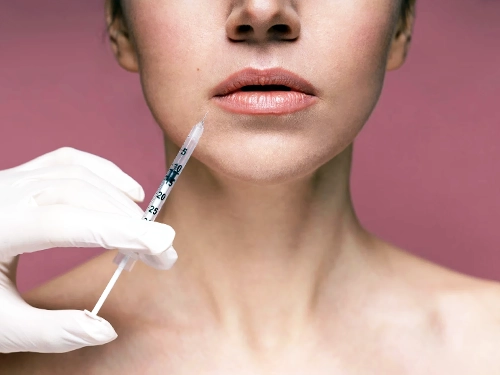
When it comes to aesthetic operations, Botox is well-known. It's a well-liked injectable that has a reputation for making wrinkles and fine lines look less prominent.
Yet, Botox is used to address a variety of medical issues and is more than just a cosmetic procedure. This article will go in-depth on everything you need to know about Botox, including how it functions, what it's used for, the advantages and disadvantages, and everything in between.
A particular botulinum toxin is known by the brand name "Botox" The bacteria Clostridium botulinum produces the neurotoxic known as botulinum toxin. It is a substance that can temporarily paralyse muscles when injected in modest dosages. The most popular brand of botulinum toxin is Botox, however there are many alternative brands like Dysport and Xeomin that may be purchased.
The US Food and Drug Administration (FDA) initially authorised Botox for medicinal use in 1989. Its approval for cosmetic usage in 2002 led to its emergence as one of the most well-liked cosmetic procedures worldwide. In addition to its development as a therapy for strabismus, Botox has an intriguing history that includes its use as a biological weapon during World War II (a condition in which the eyes are misaligned).
Botox is employed in both cosmetic and therapeutic settings. Following are some of the most typical applications for Botox:
Ultimately, Botox is a flexible procedure that can be utilised to treat a range of medical and aesthetic issues. It's crucial to speak with an experienced provider if you're considering Botox so they can guide you in deciding if it's the best course of action for you.
Botox has various advantages, both in terms of cosmetic and medicinal uses. Among the main advantages are:
Decreased appearance of wrinkles and fine lines: Botox is quite efficient at minimising wrinkles and fine lines, especially those that are present around the eyes, between the brows, and on the forehead.
Botox has been demonstrated to be a successful treatment for persistent migraines, lowering both the frequency and intensity of headaches in many people.
Muscle spasm relief: Botox can ease muscular spasms in numerous places of the body, enhancing mobility and minimising pain.
Therapy for hyperhidrosis: Botox can lessen excessive sweating, which can enhance a person's quality of life.
Therapy for overactive bladder: Botox can lessen the signs and symptoms of this problem, such as frequent and urgent urinating, enhancing the quality of life for those who suffer from it.
Botox has some dangers and potential adverse effects, despite the fact that it is usually thought to be safe. They consist of:
It's crucial to remember that Botox dangers and potential side effects are typically minor and transient. After the treatment, the majority of patients are able to resume their regular activities right away.
After three to six months, the effects of Botox usually wear off, and the muscles begin to gradually regain their capacity to contract. However, some people may experience effects that continue longer; in rare circumstances, the effects might extend up to eight or nine months.
Patients will require repeat injections every several months to maintain the benefits of Botox. Some individuals may eventually need fewer injections as their muscles adapt to the effects of Botox.
There are many untruths and misconceptions about Botox, such as the notion that it only works on elderly people or that it can provide a frozen, unnatural appearance. In fact, Botox may be used on people of all ages and skin types, and when done properly, it can produce results that look natural. To achieve the finest results, it's crucial to seek therapy from a licenced and competent healthcare provider.
The area being treated and the severity of the wrinkles or ailment being treated determine the amount of Botox needed for treatment. In general, a treatment will cost more the more Botox units that are used. The price of a Botox treatment might vary significantly based on the provider's location, their level of training, and the quantity of Botox needed.
There are alternatives to Botox, which is an effective treatment for treating some medical disorders and reducing the look of wrinkles. These include laser treatments that can help enhance skin texture and tone as well as dermal fillers that can be used to plump up the skin and minimise the appearance of wrinkles. The optimum treatment option for your unique needs and goals should be determined in consultation with a certified healthcare provider.
If you're thinking about getting Botox injections, it's crucial to pick a reputable doctor who has experience doing the procedure. Choose a practitioner that can show you before-and-after pictures of former clients and who has considerable training and experience in the cosmetic and therapeutic uses of Botox.
Before getting Botox injections, it's crucial to have a full consultation with your doctor. Your healthcare professional should be able to hear about your objectives, aspirations, and any worries you may have before recommending a course of action that is catered to your particular need.
In Conclusion, Botox is a very powerful and adaptable treatment that may be used to treat a wide range of medical disorders as well as to lessen the appearance of wrinkles and fine lines. Botox does carry some potential hazards and side effects, but these are often minor and transient. Botox can deliver permanent and perceptible results for both cosmetic and therapeutic goals with correct dosage and aftercare. Make sure to speak with a competent provider before choosing Botox so they can walk you through the procedure and assist you in reaching your objectives.
A typical procedure for reducing the appearance of wrinkles and fine lines on the face is Botox. Our skin naturally becomes less elastic as we get older, which causes the development of fine lines and wrinkles. With the help of Botox injections, you can look younger and more refreshed while also reducing the visibility of these lines. In this post, we'll go over how Botox works, which facial features it can be used on, and what results to anticipate.
The protein botulinum toxin, which is generated by the bacterium Clostridium botulinum, is used to make Botox in a pure form. Botox blocks the nerve signals that generate muscular contractions when injected into the facial muscles. Hence, it momentarily relaxes the muscles that are in charge of producing wrinkles and fine lines.
Many facial wrinkles and fine lines can be treated with Botox. The most frequently treated regions consist of:
All things considered, Botox can be a flexible technique for minimising the look of wrinkles and fine lines on the face. To obtain your desired outcomes, it's crucial to consult with a trained physician who can assist you in identifying the regions of your face that will benefit from treatment the most and developing a customised treatment plan.
Injections with Botox are rapid and not too painful. You can resume your regular activities right away following the treatment, which usually lasts between 10 and 15 minutes. At the injection site, you can have a small amount of swelling or redness, but this normally goes away within a few hours.
Typically, a few days after the injection, Botox benefits start to show up, and they can endure for several months. To keep the results of the treatment, you could require further injections every few months.
It's crucial to remember that Botox is not a long-term treatment, even if it can assist to lessen the look of wrinkles and fine lines. The effects of the procedure will eventually wear off, necessitating further injections to maintain the effects.
In conclusion, Botox is an option for treating wrinkles and fine lines on the face that is both secure and productive. It's crucial to speak with an experienced provider if you're considering Botox so they can guide you in deciding if it's the best course of action for you. With the right upkeep and care, Botox can give you a more young, renewed appearance and increase your self-confidence.
As we grin, squint, or laugh, little lines and wrinkles called "crow's feet" develop around our eyes. Even if they could be a reflection of a life well spent, many individuals feel them to be unattractive and want to hide them. Thankfully, Botox is a well-liked and successful method of treating crow's feet, and it can help to give the eyes a more renewed and youthful appearance.
The lines that appear at the corners of the eyes are referred to as crow's feet or laughter lines. A number of things, such as ageing, sun damage, and repetitive face movements, contribute to their development. The skin surrounding our eyes loses elasticity and grows thinner as we age, making it more vulnerable to wrinkles and fine lines. Moreover, the muscles surrounding the eyes might constrict as a result of smiling, squinting, and other facial movements, which can make crow's feet more obvious.
A neurotoxin called Botox works by momentarily obstructing the signals that travel from the nerves to the muscles. Botox can be used to relax and stop the contraction of the muscles that surround the eyes. As a result, the appearance of crow's feet and other wrinkles around the eyes may be lessened.
Crow's feet Botox therapy is a pretty quick and simple procedure. The doctor will initially use an antiseptic solution to disinfect the region around the eyes. Also, they could use a topical anaesthetic to lessen any pain that may arise from the injections. The doctor will next administer tiny doses of Botox to the muscles around the eyes using a very delicate needle. The degree of the crow's feet and the desired results will determine how many injections are necessary.
The doctor might advise against rubbing or massaging the region near your eyes for a few hours after the injections. For at least four hours following the therapy, you should also refrain from lying down or exercising. Around the injection sites, you might have some little bruising, redness, or swelling; however, these side effects should go away in a few days.
After the injections, the effects of a Botox treatment for crow's feet normally show up within a few days to a week. It's possible that you'll notice that the lines around your eyes look younger and less obvious, giving them a more rested appearance. In order to preserve your results, you may need to schedule another treatment after the effects of Botox have worn off, which usually lasts for three to four months.
When administered by a trained and experienced professional, Botox is regarded as a safe and efficient therapy for crow's feet. Nonetheless, there are some hazards involved with Botox injections, just like with any medical operation. Among these include transient bruising, redness, or swelling where the injections were made, as well as more severe side effects including drooping eyes or trouble swallowing. It's crucial to engage with a skilled professional who has experience administering Botox injections for crow's feet in order to reduce your chance of complications.
In conclusion, Botox may be a great treatment choice for you if you're worried by the appearance of crow's feet around your eyes. To discover more about how Botox can give you a more young and refreshed appearance, speak with a licenced practitioner.
The vertical wrinkles that appear between the eyebrows when we frown or concentrate are referred to as frown lines, often known as glabellar lines or the "11s." While these wrinkles may be a sign of age, they can also give us a fatigued, irritated, or stressed-out appearance. Thankfully, Botox is a well-liked and successful frown line treatment that can assist in regaining the forehead's smoother, more relaxed appearance.
A pure protein generated from the bacterium Clostridium botulinum that is marketed under the name "Botox" is a form of botulinum toxin. Botox blocks the nerve signals that generate muscular contractions when injected into the muscles. In turn, this can aid in muscle relaxation and lessen the visibility of wrinkles and fine lines.
The muscles in between the brows are repeatedly contracted, which results in frown lines. These contractions have the potential to cause the skin to wrinkle vertically over time. Botox functions by momentarily relaxing the muscles that cause these contractions, which can aid in skin smoothing and minimise the visibility of frown lines.
Frown lines can be treated using Botox in a pretty rapid and simple manner. The doctor will initially use an antiseptic solution to disinfect the space in between the eyebrows. Also, they could use a topical anaesthetic to lessen any pain that may arise from the injections. The therapist will then administer tiny doses of Botox into the muscles located between the eyebrows using a very fine needle. The severity of the frown lines and the intended outcomes will determine how many injections are necessary.
The doctor might advise not rubbing or massaging the area between your brows for a few hours after the injections. For at least four hours following the therapy, you should also refrain from lying down or exercising. Around the injection sites, you might have some little bruising, redness, or swelling; however, these side effects should go away in a few days.
After the injections, the effects of a Botox treatment for frown lines usually start to show up a few days to a week later. The lines between your brows could seem less defined and pronounced, giving your face a more relaxed and youthful appearance. In order to preserve your results, you may need to schedule another treatment after the effects of Botox have worn off, which usually lasts for three to four months.
Botox injections for frown lines can have certain negative effects, just like any medical therapy. There may also be brief headaches or flu-like symptoms, as well as temporary bruising, redness, or swelling at the injection sites. Rarely, Botox injections may also result in more severe adverse effects like breathing difficulties, drooping eyelids, or difficulty eating. It's crucial to engage with a skilled professional who has experience administering Botox injections for frown lines if you want to reduce your risk of consequences.
The cost of Botox for frown lines will vary depending on the provider's experience, the patient's location, and the quantity of Botox needed. A typical Botox treatment for frown wrinkles might cost between $100 and $800 per session.
After receiving a frown line Botox treatment, the majority of people are able to resume their regular activities right afterwards. During a few hours following the injections, you should refrain from rubbing or massaging the area in-between your brows. You might also want to stay away from certain activities, like yoga or with additional forms of exercise for at least four hours following treatment. By doing this, the chance of the Botox spreading to other parts of the face can be reduced.
Although Botox for frown lines can be a successful therapy, it is crucial to remember that this is not a long-term fix. In order to preserve your results, you may need to schedule another treatment after the effects of Botox have worn off, which usually lasts for three to four months. However, some people may discover that the benefits of Botox linger longer with repeated treatments.
In conclusion, frown lines can be an unsightly ageing indicator, but Botox may be a successful therapy to minimise their appearance. The operation is reasonably quick and safe, but to reduce the chance of side effects, it's crucial to work with a trained practitioner and adhere to all post-treatment instructions. Botox can help to restore a more youthful and relaxed appearance to the forehead with correct care and maintenance, boosting your confidence and making you feel your best.
One of the most prevalent ageing symptoms is forehead lines, which can make you appear older than you actually are. Thankfully, forehead lines can be diminished with Botox, a safe and efficient treatment option that also gives your face a more relaxed, youthful appearance. In this post, we'll examine how Botox reduces forehead lines as well as any possible adverse effects, cost, and downtime related to the procedure.
The neurotoxin Botox temporarily paralyses the muscles that are responsible for wrinkles and fine lines. Botox works to smooth out creases and wrinkles on the skin's surface by blocking the signals that tell muscles to contract when injected into the muscles of the forehead.
The procedure, which usually lasts between 10 and 15 minutes, involves many injections into the forehead muscles. Most patients only experience little discomfort while having the operation done, thus no anaesthetic is needed. A small amount of bruising or swelling at the injection site is possible, but this usually goes away within a few hours.
There are some potential adverse effects to be aware of, even though Botox is typically thought to be a safe and efficient therapy for forehead lines. The most typical side effects are as follows:
Most people are able to resume their regular activities almost once following treatment, and these side effects are often minor and transient. More severe side effects, like breathing difficulties, muscle weakness, or eyesight issues, might occasionally happen. It's crucial to get medical assistance right away if you develop any of these symptoms.
The price of Botox for forehead lines can vary depending on a number of variables, including the provider's location, the required number of injections, and the provider's experience and credentials. You should budget between $100 and $500 on average for each session.
Botox for forehead wrinkles has the benefit of having little to no downtime after the procedure. Most people can return to their regular activities right away after the operation, although it's advisable to avoid vigorous exercise or other activities for at least four hours following the surgery if you don't want to sweat excessively. In order to reduce the chance of the Botox spreading to other areas of the face, you might also be recommended to avoid lying down or leaning over for a while following the operation.
Although the benefits of Botox for forehead lines are temporary, it is vital to keep in mind that they normally remain for three to four months before progressively fading. You might need to schedule follow-up appointments every few months in order to preserve your results.
In conclusion, Botox is a safe and efficient treatment option for smoothing out forehead lines and bringing back the face's more youthful, relaxed expression. Despite the possibility of some side effects, most patients can resume their regular activities right away following the operation, and the results usually endure for several months. If you're thinking about getting Botox for forehead wrinkles, make sure you work with a professional who can help you get the greatest results.
When you scrunch up your nose, wrinkles called "bunny lines" develop on either side of the nose. They can also be brought on by repetitive facial gestures. They are frequently an indication of ageing. Thankfully, bunny lines can be minimised and the appearance of the face can be made more young and relaxed using Botox, a safe and effective treatment option. Everything you need to know about Botox for bunny lines, including how it functions, potential side effects, and what to anticipate during the course of treatment, will be covered in this blog.
The neurotoxin Botox temporarily paralyses the muscles that are responsible for wrinkles and fine lines. Botox works to smooth out the bunny lines on the skin's surface by blocking the signals that tell the muscles on either side of the nose to contract when administered into those muscles.
A series of injections are given into the muscles on either side of the nose throughout the therapy, which usually lasts between 10 and 15 minutes. Most patients only experience little discomfort while having the operation done, thus no anaesthetic is needed. A small amount of bruising or swelling at the injection site is possible, but this usually goes away within a few hours.
There are a few possible adverse effects to be mindful of, even though Botox is typically thought to be a safe and efficient treatment for bunny lines. The most typical side effects are as follows:
Most people are able to resume their regular activities almost once following treatment, and these side effects are often minor and transient. More severe side effects, like breathing difficulties, muscle weakness, or eyesight issues, might occasionally happen. It's crucial to get medical assistance right away if you develop any of these symptoms.
The price of Botox for bunny lines can vary based on a number of variables, including the provider's location, the required number of injections, and the provider's experience and credentials. You should budget between $100 and $300 on average for each session.
The fact that there is little to no recovery time after receiving Botox for bunny lines is one of its benefits. Most people can return to their regular activities right away after the operation, although it's advisable to avoid vigorous exercise or other activities for at least four hours following the surgery if you don't want to sweat excessively. In order to reduce the chance of the Botox spreading to other areas of the face, you might also be recommended to avoid lying down or leaning over for a while following the operation.
It's vital to remember that while Botox for bunny lines doesn't have any lasting effects, its benefits usually linger for three to four months before progressively fading. You might need to schedule follow-up appointments every few months in order to preserve your results.
It's crucial to consult with a skilled specialist who can assist you in getting the best outcomes if you're thinking about Botox for bunny lines. Choose a practitioner who has experience injecting Botox into the muscles around the nose, is certified to perform the procedure, and has undergone training. In order to have a sense of the kind of outcomes you can anticipate, you should also request to examine before-and-after pictures of other patients who have received the procedure.
In summary, Botox is a safe and efficient treatment option for erasing bunny lines and restoring a more youthful, relaxed appearance to the face. Despite the fact that there are some possible negative effects, the majority of patients tolerate the procedure well and have little to no downtime following it. It's crucial to engage with a skilled provider who can assist you in getting the greatest outcomes and who can respond to any queries you may have regarding the course of treatment.
Make an appointment for a consultation with an experienced provider in your region if you're curious to learn more about Botox for bunny lines. They can provide you with information about the process and assist you in deciding if this treatment is appropriate for you. You can obtain a more youthful and refreshed appearance and permanently banish those bothersome bunny lines with the right procedure and treatment.
Lip lines, often referred to as lipstick lines or smoker's lines, can be bothersome, so you may be thinking about Botox as a possible treatment. The cosmetic procedure Botox is well-known for its capacity to minimise the appearance of wrinkles and fine lines. Everything you need to know about Botox for lip lines, including how it functions, potential side effects, and what to anticipate during the healing process, will be covered in this blog post.
The vertical lines that appear around the mouth, particularly on the upper lip, are called lip lines. Age, sun damage, smoking, and repeated facial expressions like puckering the lips are just a few of the causes of these lines. Despite the fact that these lines are a typical sign of ageing, they might make you appear older than you actually are and cause self-consciousness.
Botox functions by momentarily relaxing the muscles that produce fine lines and wrinkles. Botox can reduce lip wrinkles and give the lips a more youthful appearance when injected into the muscles around the mouth. Dermal fillers, which can help plump up the lips and further minimise the appearance of lines and wrinkles, are frequently used in conjunction with Botox.
Botox for lip lines has potential negative effects, just like any cosmetic surgery. They could include the following at the injection site: redness, swelling, bruising, and soreness. More severe side effects, like trouble speaking or swallowing, may sometimes appear. Yet, Botox is typically a secure and well-tolerated treatment choice when administered by a skilled professional.
Your doctor might advise against vigorous activity or any other activities that could result in excessive sweating for 24 hours following the treatment. To reduce the risk of bruising, you might also be told to refrain from drinking and using blood-thinning drugs for a few days.
Botox takes time to take effect, so you might not experience the full effects of the operation for a few days to a week following the procedure. After the benefits of Botox have worn off, which normally lasts three to six months, you might need to make a second appointment for maintenance treatments.
If you want to lessen the appearance of wrinkles and fine lines around your mouth, Botox for lip lines may be an effective and minimally invasive treatment option. Although there may be some adverse effects, most patients tolerate the treatment well and have little to no recovery time after the surgery. Make an appointment for a consultation with a licenced specialist in your region if you're thinking about getting Botox for lip lines to find out if this procedure is correct for you.
You could feel self-conscious about having a chin dimple, also known as a chin cleft, and search for ways to smooth it out. Botox, a well-liked cosmetic procedure recognised for its capacity to lessen the look of wrinkles and fine lines, is one possible therapeutic choice. Everything you need to know about Botox for chin dimples, including how it functions, potential side effects, and what to anticipate during the healing process, will be covered in this blog post.
Chin dimples are clefts or indentations that develop on the chin. They are more prevalent in men than women and can be brought on by ageing or genetics. While some people find their chin dimples endearing, others may find the appearance bothersome and look for ways to eliminate it.
Botox functions by momentarily relaxing the muscles that produce fine lines and wrinkles. Botox can help minimise the appearance of a chin dimple when injected into the chin muscles. It accomplishes this by loosening the chin muscle, which smooths out the indentation by pulling the skin into it.
Botox for chin dimples has potential negative effects, just like any cosmetic procedure. They could include the following at the injection site: redness, swelling, bruising, and soreness. More severe side effects, like trouble speaking or swallowing, may sometimes appear. Yet, Botox is typically a secure and well-tolerated treatment choice when administered by a skilled professional.
Your doctor might advise against vigorous activity or any other activities that could result in excessive sweating for 24 hours following the treatment. To reduce the risk of bruising, you might also be told to refrain from drinking and using blood-thinning drugs for a few days.
Botox takes time to take effect, so you might not experience the full effects of the operation for a few days to a week following the procedure. After the benefits of Botox have worn off, which normally lasts three to six months, you might need to make a second appointment for maintenance treatments.
If you want to reduce the appearance of chin clefts, Botox for chin dimples may be an efficient and minimally invasive treatment option. Although there may be some adverse effects, most patients tolerate the treatment well and have little to no recovery time after the surgery. Schedule a consultation with an experienced practitioner in your region if you're thinking about Botox for chin dimples to find out if this procedure is correct for you.
Age-related skin elasticity loss causes the development of fine lines, wrinkles, and sagging skin. The development of vertical bands or lines around the neck, sometimes known as "neck bands," is one of the most prevalent indicators of ageing. Even if you feel young and enthusiastic on the inside, these neck bands might make you look older and exhausted. Luckily, Botox is a quick and efficient fix for this issue.
Botulinum toxin, also known as "Botox" is a common cosmetic procedure used to treat a number of aging-related conditions, including neck bands. Botox helps to reduce wrinkles and fine lines and give the skin a more youthful appearance by temporarily numbing the muscles in the afflicted area.
The platysma muscle, which extends from the chest up to the jawline, is what causes neck bands. Vertical bands or lines may emerge in the neck region as a result of this muscle gaining strength and visibility with age. Botox smoothes out these lines and gives the skin a more youthful appearance by relaxing the platysma muscle.
Botox for neck bands is a simple and quick procedure that normally takes 15 to 30 minutes to complete. To lessen any discomfort, numbing the area with a topical anaesthetic lotion is the first step. Your cosmetic surgeon will use a very thin needle to inject Botox into the platysma muscle after the area has become numb. The severity of your neck bands and the desired result will determine how many injections are necessary.
You might suffer some little soreness or oedema following the surgery, but these adverse effects should go away quickly. During a week or two, you will start to notice the full effects of the treatment, and the effects may endure for up to six months.
You must repeat the procedure every six months to maintain the effects of Botox for neck bands, which is a crucial point to keep in mind. Instead of requiring more intrusive operations like a neck lift, regular treatments can give you a more young and refreshed appearance.
To sum up, Botox for neck bands is a secure and efficient approach to reduce the appearance of wrinkles and fine lines around the neck and give the area a more youthful look. It's best to speak with a skilled cosmetic surgeon who can answer your questions and explain this process to you if you're irritated by neck bands and want to learn more about it.
For many people, hyperhidrosis, or excessive sweating, can be an embarrassing and uncomfortable condition. It may have an effect on daily functioning, induce social anxiety, or even result in depression. The armpits, or axillae, are one location on the body where this illness can be particularly uncomfortable. Luckily, Botox injections are a therapy option that have been successfully used to manage this issue.
A neurotoxin called Botox, also known as botulinum toxin, is frequently used in cosmetic operations to minimise the appearance of wrinkles. But, it also has medical applications, including the management of hyperhidrosis. Botox stops the chemical impulses that trigger sweat glands when injected into the afflicted area, which lowers sweat production. For several months, Botox injections for axillary hyperhidrosis can reduce sweating by up to 80–90%.
The axillary hyperhidrosis Botox injection technique is usually quick, taking only around 30 minutes to complete. In order to minimise any discomfort during the treatment, the doctor will first numb the region with ice or a topical anaesthetic. Then they will inject tiny quantities of Botox into numerous locations in each armpit with a tiny needle. The severity of the problem will determine how many injections are required.
The disease known as palmar hyperhidrosis, which refers to excessive sweating of the palms, can be aggravating and unpleasant and have a detrimental effect on a person's quality of life. Luckily, Botox injections are a therapy option that have been successfully used to manage this issue.
A neurotoxin called Botox, also known as botulinum toxin, is frequently used in cosmetic operations to minimise the appearance of wrinkles. But, it also has medical applications, including the management of hyperhidrosis. Botox stops the chemical impulses that trigger sweat glands when injected into the afflicted area, which lowers sweat production. Botox injections can reduce sweating caused by palmar hyperhidrosis by up to 80% to 90% for several months.
The palmar hyperhidrosis Botox injection procedure is fairly straightforward and typically takes 30 minutes to complete. In order to minimise any discomfort during the treatment, the doctor will first numb the region with ice or a topical anaesthetic. Then they will inject tiny quantities of Botox into numerous spots on each palm using a tiny needle. The severity of the problem will determine how many injections are required.
Patients may notice mild edoema or redness in the area after the injection. These adverse effects, however, typically go away within a day or two. After the treatment, patients can resume their regular routines right away, although they should wait 24 hours before engaging in any vigorous activity or being exposed to heat.
Within a few days of the treatment, patients frequently notice a decrease in sweat production, with complete results appearing two weeks later. Although the length of the effects varies from person to person, Botox injections for hyperhidrosis might have an impact for several months. Patients will require further injections of Botox when the benefits start to wane in order to maintain the outcomes.
Although axillary hyperhidrosis can be a difficult illness to manage, those who experience it may find that Botox injections are a safe and efficient therapeutic choice. Botox injections can offer long-lasting relief from excessive sweating with a reasonably easy treatment and few side effects, enhancing patients' quality of life and self-confidence. If you struggle with excessive sweating, speak with a doctor to see if Botox injections are the correct choice for you.
Patients may notice mild oedema or redness in the area after the injection. These adverse effects, however, typically go away within a day or two. After the treatment, patients can resume their regular routines right away, although they should wait 24 hours before engaging in any vigorous activity or being exposed to heat.
Within a few days of the treatment, patients frequently notice a decrease in sweat production, with complete results appearing two weeks later. Although the length of the effects varies from person to person, Botox injections for hyperhidrosis might have an impact for several months. Patients will require further injections of Botox when the benefits start to wane in order to maintain the outcomes.
Although palmar hyperhidrosis can be a difficult illness to manage, those who experience it may find that Botox injections are a safe and efficient therapeutic choice. Botox injections can offer long-lasting relief from excessive sweating with a reasonably easy treatment and few side effects, enhancing patients' quality of life and self-confidence. If you struggle with excessive palm sweating, speak with a doctor to see if Botox injections are the correct choice for you.
Plantar Hyperhidrosis (Sweaty Feet) or excessive sweating of the feet, can be a frustrating and embarrassing condition that affects many people. While there are several treatments available for this condition, Botox injections have been found to be an effective option. In this blog, we will discuss the indications for Botox for plantar hyperhidrosis (Botox for excessive sweating of the feet),the procedure, possible complications, and post-care instructions.
Botox, or Botulinum toxin, is a neurotoxin that can be injected into the skin to block the release of acetylcholine, a chemical messenger that stimulates sweat production. Botox injections have been found to be effective in treating hyperhidrosis, and can also be used to treat excessive sweating of the palms, underarms, and other areas of the body.
Botox injections are recommended for patients who have tried other treatments for plantar hyperhidrosis, such as antiperspirants, iontophoresis, or prescription medications, but have not seen significant improvement. Patients who experience discomfort or embarrassment due to their excessive sweating may also benefit from this treatment.
The procedure for Botox for plantar hyperhidrosis is minimally invasive and typically takes about 30 minutes to complete. Before the procedure, the patient’s feet are cleaned and numbed with a local anaesthetic to minimize discomfort. The doctor will then use a small needle to inject Botox into the sweat glands of the feet.
The number of injections required will vary depending on the size of the patient’s feet and the severity of their hyperhidrosis. Most patients require between 50 and 100 injections per foot. After the injections, patients can return to their normal activities immediately, but should avoid excessive physical activity for the rest of the day.
As with any medical procedure, there are potential complications associated with Botox injections for plantar hyperhidrosis. These can include temporary bruising or swelling at the injection site, as well as temporary weakness or numbness in the feet.
In rare cases, patients may experience an allergic reaction to the Botox. Signs of an allergic reaction include difficulty breathing, swelling of the face or throat, and hives. Patients should seek medical attention immediately if they experience any of these symptoms.
After receiving Botox injections for plantar hyperhidrosis, patients should avoid touching or massaging their feet for at least four hours to ensure that the Botox is fully absorbed. Patients should also avoid excessive heat, such as hot baths or saunas, for the first 24 hours after the injections.
It is important to note that Botox injections for plantar hyperhidrosis are not a permanent solution. The effects of the injections typically last between four and six months, after which patients may need to receive additional injections.
In conclusion, Botox injections can be an effective option for treating plantar hyperhidrosis, a condition that can cause discomfort and embarrassment for many people. While there are potential complications associated with the procedure, these are generally rare and can be managed with proper care. If you are interested in Botox for plantar hyperhidrosis, speak with your doctor to determine if this treatment is right for you.
The masseter muscle, which is found in the jaw, controls how the jaw moves while speaking, chewing, and making other facial expressions. The masseter muscle may grow in some people, giving them a square-shaped jawline. This disorder, known as masseter hypertrophy, can be uncomfortable, such as jaw pain or teeth grinding, and it can also be unsightly. Thankfully, a cosmetic surgery known as masseter Botox can assist in resolving these problems. We will discuss the masseter Botox indications, technique, and potential adverse effects in this blog article.
The main cosmetic function of masseter Botox is to reduce the appearance of a squared-off jawline brought on by masseter hypertrophy. It can also be used therapeutically to alleviate disorders like teeth grinding, jaw pain, and other issues brought on by overusing the masseter muscle.
Little doses of Botox are injected into the masseter muscle during the masseter Botox procedure. The operation is carried performed in a doctor's office and usually lasts between 10 and 15 minutes. The region will be cleaned before the treatment, and a topical anesthetic may be used to lessen any discomfort.
A very little needle is used to administer Botox into the masseter muscle during the surgery. The size of the muscle and the desired result will determine how many injections are necessary. The majority of individuals need 2-4 shots each side. Patients can resume their regular activities right away after the operation.
Masseter Botox may cause negative effects, just like any cosmetic procedure. Mild pain or discomfort at the injection site, bruising, and swelling are the most typical adverse effects. Rarely, individuals may encounter more serious side effects, such as trouble breathing or swallowing, which should be reported right once to a medical professional.
The look of a square-shaped jawline brought on by masseter hypertrophy can be improved by masseter Botox, a safe and efficient cosmetic surgery. In addition, it has a therapeutic function for treating jaw pain and teeth grinding. The technique is popular among people looking for a quick and simple solution to their cosmetic or therapeutic concerns because it is minimally invasive and causes no downtime. To find out if you are a good candidate for masseter Botox and to find out more about the potential dangers and advantages of the operation, it is crucial to speak with a knowledgeable healthcare provider.
The cosmetic use of Botox, also known as botulinum toxin type A, to smooth out wrinkles and fine lines, has been around for a while. But in recent years, it has also gained popularity as a migraine cure. However, in recent years, it has also become a popular treatment for migraines. We'll examine the method of application, efficacy, side effects, and mechanism of action of Migraine Botox in more detail in this article.
Little dosages of botulinum toxin type A are injected directly into the muscles causing the patient's migraine headaches as part of the application technique for Migraine Botox injections for the forehead, temples, and brow area. These injections are normally given in a series of 10 to 15 injections per location using a very small needle.
The frontalis muscle, which raises the eyebrows and causes forehead wrinkles, is often the target of injections for the forehead. The temporalis muscle, which controls chewing and jaw clenching, is often the target of injections for the temples. The corrugator and procerus muscles, which are in charge of frowning and forming vertical lines between the eyebrows, are often injected in the brow region.
The another option of the treatment; Migraine Botox injections are administered using a very fine needle. The injection is delivered directly into specific points on the forehead, temples, back of the head, and neck. These injections are typically administered in a series of 31-39 injections every 12 weeks. The injection process takes approximately 15-20 minutes, and patients can typically resume their normal activities immediately after treatment.
The procedure for injecting Botox for migrain lasts 15 to 20 minutes and is generally well-tolerated by patients. During the injection procedure, patients may feel a slight amount of discomfort, although this usually passes rapidly.
It has been established that migraine headaches can be successfully treated with Botox injections. Patients who received Migraine Botox injections in clinical studies reported a marked decrease in the frequency and intensity of their headaches.
“The American Migraine Foundation states that migraine Botox injections can lower the number of headaches suffered from migraines by an average of 2-3 per month. Migraine Botox injections can help with additional migraine symptoms like nausea and sensitivity to light and sound in addition to reducing the frequency and intensity of migraines.”
Migraine Botox injections do have certain possible hazards and side effects, just like any medical operation. The following are the most frequent negative effects of migraine Botox injections:
The majority of these side effects are minor and go away on their own in a few days. Severe adverse effects including allergic reactions are quite uncommon.
Uncertainty surrounds the precise mode of action of migraine Botox injections. Yet, it is thought that the injections function by preventing the release of specific brain chemicals linked to inflammation and pain. As a result, the frequency and intensity of migraine are lessened.
While migraine Botox injections can be an effective treatment for migraine, they are not a cure, it is crucial to remember this. To sustain the therapeutic effects, patients will require routine injections.
Moreover, not all patients may benefit from migraine Botox injections, and some patients may need additional or alternative therapies to manage their migraine symptoms.
Migraines are caused by a reduction in frequency of pain. The injection procedure is rapid, painless, and has little adverse effects. Migraine Botox injections are thought to function by preventing the production of specific chemicals in the brain that are linked to pain and inflammation, however its exact mode of action is still unknown. Migraine Botox injections may be a useful therapeutic option to think about if you frequently have headaches. Always with your healthcare professional about your treatment options to find the best course of action for your particular need.
In most cases, patients can return to their normal activities immediately after receiving masseter Botox injections. However, it's important to follow any specific instructions provided by the healthcare professional.
Patients may experience some mild swelling, redness, or bruising at the injection site, which can typically be covered with makeup and should subside within a few hours or days. It's important to avoid rubbing or massaging the treated area, as this can cause the toxin to spread to unintended areas and lead to potential complications.
Additionally, patients should avoid strenuous exercise, saunas, and hot tubs for at least 24 hours after the procedure, as this can increase the risk of swelling or bruising. It's also important to avoid lying down or bending over for at least 4 hours after the procedure to prevent the toxin from migrating to unintended areas.
Overall, most patients are able to resume their normal activities immediately after receiving masseter Botox injections, but it's important to follow any specific instructions provided by the healthcare professional to ensure optimal results and minimize the risk of complications.
The timing of results from masseter Botox can vary from patient to patient. Generally, patients can start to see some improvement in the appearance of their jawline within a few days to a week after the injection. However, the full effects of the treatment may take up to several weeks to become fully visible.
It's important to note that the results of masseter Botox injections are not permanent and typically last between 3-6 months. As the effects of the treatment wear off, patients may begin to notice a gradual return of the fullness or bulkiness of their jawline.
It's also worth mentioning that some patients may require multiple treatments to achieve their desired results. The number of treatments required will depend on factors such as the severity of the masseter muscle hypertrophy and the individual response to the treatment.
Overall, while the timing of results from masseter Botox can vary, most patients can expect to see some improvement in the appearance of their jawline within a few days to a week after the injection, with the full effects becoming visible within several weeks.
The results of masseter Botox injections typically last between 3-6 months. However, this can vary depending on factors such as the amount of Botox injected, the severity of masseter muscle hypertrophy, and individual response to the treatment.
As the effects of the treatment begin to wear off, patients may notice a gradual return of the fullness or bulkiness of their jawline. At this point, some patients may choose to undergo additional Botox injections to maintain their desired results.
It's worth noting that while the results of masseter Botox injections are not permanent, over time, some patients may experience a reduction in the overall size of their masseter muscles due to the muscle being underused. This means that they may require fewer Botox injections to maintain their desired results in the long term.
It's important to work with a qualified and experienced injector to ensure that you receive the appropriate amount of Botox for your individual needs and desired results, and to discuss a personalized treatment plan to help you maintain your desired appearance over time.
After receiving masseter Botox injections, patients can expect to experience some mild side effects, such as redness, swelling, and bruising at the injection site. These side effects are usually mild and temporary, typically resolving within a few days.
Patients should avoid massaging or manipulating the treated area for at least 24 hours after the injection to avoid the risk of spreading the Botox to unintended areas. They should also avoid lying down or engaging in strenuous physical activity for at least 4 hours after the injection.
In terms of the effects of the treatment, patients typically begin to see a reduction in the size of their masseter muscles within 2-4 weeks after the injection. This can result in a more aesthetically pleasing jawline, improved facial symmetry, and relief from jaw clenching and teeth grinding.
It's important to note that the full effects of the treatment may take several weeks to fully develop, and the duration of the results can vary from person to person. Some patients may require additional injections to achieve their desired results, while others may find that a single treatment is sufficient.
Patients should follow up with their injector after the treatment to assess the results and discuss any concerns or additional treatment options. It's important to work with a qualified and experienced injector to ensure that you receive safe and effective treatment and achieve the best possible results.
The frequency of masseter Botox injections to maintain results can vary depending on the individual and their response to the treatment. Generally, the effects of masseter Botox injections can last anywhere from 4-6 months, but this can vary from person to person.
If you are looking to maintain the results of your masseter Botox treatment, you should consult with your injector to determine the best approach for your individual needs. Some patients may require more frequent injections to maintain their results, while others may be able to go longer between treatments.
Factors that can impact the frequency of Botox injections include the amount of Botox used, the strength of your masseter muscles, and your individual response to the treatment. Additionally, lifestyle factors such as stress, diet, and exercise habits can also impact the longevity of Botox results.
Ultimately, it's important to work closely with your injector to develop a personalized treatment plan that meets your specific needs and goals. Regular follow-up appointments can help ensure that you are achieving optimal results and maintaining the best possible outcomes over time.
Masseter Botox is primarily used to reduce the size and activity of the masseter muscle, which can have a slimming effect on the lower face. However, while the treatment can improve the appearance of the face, it is important to note that it is not a substitute for weight loss or other cosmetic procedures.
In terms of changes to facial appearance, masseter Botox is typically a subtle treatment that does not drastically alter the overall appearance of the face. Some patients may experience a slightly more contoured and slimmer lower face, but this will largely depend on the individual's starting point and the goals of the treatment.
It is also worth noting that masseter Botox is a temporary treatment that typically lasts around 4-6 months. Therefore, any changes to facial appearance will also be temporary and will require ongoing maintenance to achieve long-term results.
As with any cosmetic procedure, it is important to consult with a qualified and experienced injector to determine if masseter Botox is the right treatment for you and to discuss any potential risks or side effects. A skilled injector will work with you to develop a personalized treatment plan that addresses your individual concerns and goals while helping you achieve the best possible results.
Botox can also be used to treat diseases brought on by excessive or spasmodic muscular activity. Botox can assist to lessen muscular contractions and provide relief from diseases like persistent migraines, overactive bladder, and cervical dystonia by preventing the release of acetylcholine.
Typically, the benefits of Botox endure for three to six months. Thereafter, the muscle activity gradually returns, which may cause the wrinkles or other side effects to reappear. To sustain the desired outcomes, further injections are required.
Like all medical procedures, masseter Botox injections could have risks and adverse effects. Even while the operation is normally risk-free when carried out by a licensed medical expert, there are some potential problems to be aware of.
The following are a few masseter Botox adverse effects:
More severe problems, such as the following, may sporadically arise.
It's crucial to remember that when the treatment is carried out by a trained and experienced healthcare practitioner who adheres to the proper safety protocols, the chance of problems is low.
It's crucial to tell the healthcare provider about any relevant medical history or drugs prior to the treatment in order to reduce the chance of adverse effects and complications. To achieve the best results and reduce the risk of problems, patients should also adhere to any pre- and post-treatment advice given by the healthcare provider.
“The main purpose of masseter Botox is to lessen the size and activity of the masseter muscle, which can slim down the lower face. Although the therapy might enhance facial look, it is crucial to remember that it cannot replace weight loss or other cosmetic treatments.”
When it comes to alterations to facial appearance, masseter Botox is often a mild procedure that does not significantly impact the face's overall appearance. Some patients might notice that their lower face is a little more defined and slimmer, although this will mostly rely on the patient's starting place and the treatment's objectives.
It's also important to remember that masseter Botox is only a temporary solution, usually lasting 4-6 months. Any alterations to facial appearance will thus likewise be transient and necessitate continuing care to produce lasting effects.
As with any cosmetic operation, it is crucial to speak with a licensed and skilled injector to discuss any potential dangers or side effects and decide whether masseter Botox is the best course of action for you. A knowledgeable injector will collaborate with you to create a custom treatment plan that takes into account your unique needs and objectives and enables you to get the greatest outcomes.
The price of masseter Botox injections can change depending on a variety of variables, including the location, the injector's experience level, and the quantity of units administered. The average cost of a masseter Botox injection session ranges from $100 to $1,000. Certain service providers could bill by the unit, with an average fee of $3 to $10 per unit. The number of units required to produce the desired outcomes can also affect the treatment's overall cost.
It's crucial to remember that selecting a supplier for masseter Botox injections shouldn't be based solely on price. Selecting an injector with training and experience is crucial because they can administer safe and efficient treatments and have a good understanding of facial anatomy. In order to retain the effects of the initial injection, it is also crucial to have any additional maintenance treatments that are required.
Masseter Botox is regarded as a cosmetic treatment; hence insurance frequently does not cover it. However, there can be certain exceptions when masseter Botox is used to treat ailments like bruxism or abnormalities of the temporomandibular joint (TMJ). In these situations, it's vital to check with your insurance company to determine if Botox treatments are covered for certain problems and what paperwork would be needed to prove the treatment's medical need.
In order to make the cost of Masseter Botox treatment more bearable, certain providers may provide financing options or payment plans. At your consultation, be sure to explore your options with your provider.
You may be a good candidate for masseter Botox if you struggle with problems like clenching or teeth grinding or if your large masseter muscles give you a strong, square jawline. Also, masseter Botox could be a wonderful choice if you want to narrow your jawline or make your face look more attractive.
It's vital to remember that not everyone may be a good candidate for masseter Botox. If you have an allergy to any Botox ingredient, are pregnant or nursing, or have a neuromuscular condition like myasthenia gravis or Eaton-Lambert syndrome, you shouldn't get this therapy.
It is advisable to schedule a consultation with a skilled and experienced physician who can evaluate your unique needs and goals, as well as your medical history and any potential risks or consequences, in order to establish if you are a good candidate for masseter Botox. They can also go over the anticipated results of the procedure and assist you in determining whether masseter Botox is the best option for you.
Depending on a person's unique demands and objectives, there are a few alternatives to masseter Botox that can be taken into consideration. Here are several possibilities:
The optimum course of therapy for your particular requirements and objectives should be determined in consultation with a trained medical specialist.
Certainly, there are some circumstances under which a person may not be a good candidate for masseter Botox. They consist of:
It is not advised to receive Botox injections during pregnancy or when nursing a baby.
Asking your doctor a number of questions before to receiving masseter Botox will help you make an educated decision and ensure that you are comfortable with the procedure. Consider asking the following queries, for example:
Botox reduces the visibility of wrinkles and fine lines on the skin by temporarily paralyzing or weakening the targeted muscles. The neurotransmitter acetylcholine, which is in charge of causing muscular contractions, is prevented from releasing when Botox is injected into the muscle. The muscle relaxes as a result, which lessens the visibility of lines and wrinkles on the skin.
Dynamic wrinkles, which are brought on by recurrent muscular spasms, respond best to Botox treatment. Usually, these creases appear around the eyes, between the brows, and on the forehead. Botox can lessen the visibility of these wrinkles by relaxing the muscles in charge of these movements.
Botox can also be used to treat diseases brought on by excessive or spasmodic muscular activity. Botox can assist to lessen muscular contractions and provide relief from diseases like persistent migraines, overactive bladder, and cervical dystonia by preventing the release of acetylcholine.
Typically, the benefits of Botox endure for three to six months. Thereafter, the muscle activity gradually returns, which may cause the wrinkles or other side effects to reappear. To sustain the desired outcomes, further injections are required.
Botox is generally regarded as safe when administered by a qualified and registered medical expert. Yet, Botox injections could come with potential hazards and adverse consequences, just like any medical procedure.
Temporary redness, swelling, and bruising at the injection site are a few of the most frequent side effects of Botox injections. Other possible adverse effects include headache, flu-like symptoms, and momentary drooping of the eyelids.
Rarely, more severe adverse effects of Botox can include breathing or swallowing difficulties, muscle weakness, and vision issues. By using the right injection technique and dosage, it is possible to avoid these side effects, which are often caused by the toxin spreading outside of the injection site.
It's crucial to remember that only a skilled healthcare expert, such as a dermatologist, plastic surgeon, or other registered healthcare provider, should give Botox. Prior to obtaining Botox injections, patients should reveal their medical history and any medications they are currently taking to guarantee their safety.
“Overall, when administered properly and by a trained professional, Botox is a safe and efficient treatment for both medical and cosmetic needs.”
Around 50 years have passed since the invention of Botox for medicinal usage. In the 1960s, strabismus, a disorder in which the eyes are out of alignment, was the first medical ailment for which Botox was utilized. Since then, a number of medical disorders have been treated with Botox, including migraines, overactive bladder, and muscular spasms.
When it was discovered that injecting Botox into facial muscles might lessen the appearance of wrinkles and fine lines, the cosmetic usage of Botox got underway in the 1990s. The cosmetic surgery of Botox gained popularity immediately and is still one of the most often used today.
A lot of clinical testing and research have been done on Botox since it was first developed to determine its effectiveness and safety. It has received regulatory agency approval for both medicinal and cosmetic usage in a number of nations, including the US Food and Drug Administration (FDA).
Today, Botox is a common treatment option for a number of ailments and is used extensively for both medical and aesthetic objectives.
Both Botox and fillers are injectable cosmetic treatments, however they have different mechanisms of action and are used to treat various kinds of wrinkles and fine lines.
Botox reduces the appearance of dynamic wrinkles, or wrinkles brought on by recurrent muscular spasms, by temporarily paralyzing or weakening the targeted muscles. Botox is frequently used to address wrinkles between the brows, on the forehead, and around the eyes.
Contrarily, fillers are injectable compounds that are used to plump up the skin's volume and smooth out wrinkles and fine lines brought on by volume loss, commonly known as static wrinkles. Wrinkles and fine lines around the mouth, cheeks, and chin are frequently treated with fillers.
The active components in Botox and fillers also vary. Botulinum toxin type A, a neurotoxin that temporarily paralyzes muscles, is used to make Botox in a pure form. Many materials, including hyaluronic acid, calcium hydroxylapatite, and poly-L-lactic acid, can be used to create fillers.
According to the type of filler used, the effects of fillers can last anywhere between six months and two years whereas the effects of Botox normally last three to six months.
The decision between Botox and fillers will ultimately be based on the particular needs and objectives of each patient. Based on the patient's particular needs and intended results, a skilled medical specialist can assist in determining which treatment option is most suitable.
Your age, skin type, and the particular issues you want to treat will all have an impact on whether or not you are a good candidate for Botox. In general, suitable candidates for Botox include:
There is no set age at which you should begin Botox treatments because the timing of these procedures is greatly influenced by your personal concerns and objectives. However, Botox is normally advised for people who have wrinkles brought on by muscular spasms, which usually begin to show up in the mid to late 20s.
As a preventative strategy, some people might decide to start taking Botox before wrinkles become more obvious. Smaller doses of Botox are used in this technique, also known as "preventative Botox" or "baby Botox" to relax the muscles that create wrinkles before they become more obvious.
The choice to begin receiving Botox is ultimately a personal one that should be based on your unique concerns and objectives. It is crucial to talk through your options with a licensed medical expert who can advise you on the most effective course of action for your particular needs. They can also give you advice on when to get procedures done and whether or not Botox for prevention is a smart option for you.
Absolutely, males can receive Botox. In fact, men are increasingly opting for Botox as a way to enhance their appearance and fight the effects of aging.
Like women, men can develop facial wrinkles and fine lines from repeated muscle contractions, such as crow's feet, frown lines, and forehead wrinkles. With the temporary relaxation of these muscles and the smoothing out of the creases and lines, Botox can contribute to a more youthful and revitalized appearance.
Botox can be used to treat various issues, including as migraines and excessive sweating (hyperhidrosis),in addition to wrinkles.
It's vital to remember that men may have larger and stronger facial muscles than women, thus the quantity and location of Botox injections may differ for them. In order to get the greatest outcomes, it is crucial to speak with a licensed medical specialist who has expertise using Botox on male patients.
Botox treatments are typically not advised for women who are expecting or nursing. Despite the paucity of evidence on Botox safety during pregnancy and nursing, it is advised to err on the side of caution and steer clear of the procedure during these times.
Botox temporarily paralyzes the muscles that create wrinkles and other issues, which may have an impact on a developing fetus's development or the health of a nursing infant. Also, as Botox is a drug, it could experience unforeseen adverse effects like all other medications do.
It's crucial to talk with your doctor about your alternatives if you're considering Botox while pregnant or nursing. They can assist you in weighing the benefits and dangers and choosing the best course of action for you and your unborn child. Botox treatments should typically be delayed until after pregnancy and nursing have concluded.
Due to the fact that Botox entails injecting a medicine into the body, people with certain medical issues may not be good candidates for the procedure. Certain medical issues could make Botox less effective or raise the risk of consequences.
The following circumstances could affect the safety or effectiveness of Botox:
Before getting Botox, it's vital to talk to your doctor about any underlying health issues you may have and any drugs you may be on. They are able to evaluate your particular circumstances and decide whether or not Botox is risk-free and suitable for you.
Those with specific medical issues may occasionally still be able to undergo Botox, but they may need closer monitoring or particular safety measures while receiving the treatment. To guarantee the greatest results, it is crucial to collaborate with a licensed medical expert who has expertise treating individuals with a variety of medical issues.
The most common area for Botox injections is the upper face, specifically the area between the eyebrows known as the glabella. This is where frown lines, also called "11 lines", can form as a result of repeated facial expressions such as squinting, frowning or concentrating.
Injecting Botox into the glabella area can temporarily relax the muscles that cause these wrinkles, resulting in a smoother and more youthful appearance. In addition to the glabella, Botox injections are also commonly used to treat forehead wrinkles and crow's feet around the eyes.
It's important to note that the amount and location of Botox injections will vary depending on the individual's specific concerns and desired outcome. A skilled medical professional will carefully evaluate the patient's facial anatomy and make recommendations based on their individual needs.
Yes, Botox can be used on other parts of the body besides the face. In fact, Botox is FDA-approved for several non-cosmetic medical uses, including:
Additionally, some medical professionals may use Botox "off-label" for other conditions, such as TMJ disorders or chronic neck pain. However, it's important to note that using Botox for off-label purposes may not be covered by insurance and may not have FDA approval for that particular use. It's important to discuss any potential non-cosmetic use of Botox with a qualified medical professional.
Botox is administered through a series of injections using a very fine needle. The injections are typically performed in a medical office or clinic, and the procedure can take as little as 10 minutes to complete.
Before the Botox injections, the medical professional will first mark the areas of the face or body where the injections will be placed. The injection sites are usually cleansed with alcohol to reduce the risk of infection.
The actual injection process is usually described as feeling like a quick pinch or sting. The number of injections required will depend on the individual's specific concerns and desired outcome, but most treatments involve multiple injections spaced evenly across the treatment area.
After the Botox injections, patients may experience some slight redness, swelling, or bruising at the injection sites. These side effects are usually mild and resolve within a few hours to a few days.
It's important to note that Botox should only be administered by a qualified medical professional, such as a dermatologist or plastic surgeon, who has been trained in the proper administration of Botox. Improper administration can result in unsatisfactory results or potential complications.
The Botox injection process is generally described as feeling like a quick pinch or sting, but the level of discomfort can vary from person to person. Many people report that the injections are relatively painless, while others may experience some mild discomfort.
Fortunately, the injection process is very quick, with most treatments taking just a few minutes to complete. Additionally, some medical professionals may use numbing cream or ice packs to help reduce any discomfort during the injections.
After the Botox injections, patients may experience some mild redness, swelling, or bruising at the injection sites, but these side effects are usually mild and resolve within a few hours to a few days. Pain relievers such as ibuprofen can be taken to reduce any discomfort or swelling after the Botox procedure.
It's important to discuss any concerns about pain or discomfort with the medical professional who will be administering the Botox injections, as they may be able to offer strategies to help minimize any discomfort.
A Botox treatment typically takes only a few minutes to administer, with most procedures taking between 10-20 minutes to complete. The exact duration of the treatment will depend on the number of areas being treated and the amount of Botox being injected.
Before the Botox injections, the medical professional will assess the patient's concerns and determine the appropriate amount of Botox needed to achieve the desired results. They will then mark the injection sites and administer the injections using a very fine needle.
After the Botox injections, patients may be advised to avoid certain activities or positions for a short period of time, such as lying down or strenuous exercise to minimize the risk of complications.
It's important to note that the effects of Botox are not immediate and can take several days to appear. The full effects of the Botox treatment may take up to two weeks to be fully visible, and results can last for several months before additional injections are needed.
Most people are able to resume their normal activities immediately after receiving Botox injections, as there is typically no downtime associated with the treatment.
However, some people may experience mild redness, swelling, or bruising at the injection sites, which can take a few hours to a few days to resolve. It's important to avoid rubbing or massaging the treated areas for at least 24 hours after the injections, as this can cause the Botox to migrate to other areas and affect unintended muscles.
Additionally, patients may be advised to avoid certain activities or positions for a short period of time after the treatment, such as lying down or performing strenuous exercise, to minimize the risk of complications.
Overall, the downtime associated with Botox injections is minimal, and most people are able to resume their normal activities immediately after the procedure. However, it's important to follow any post-treatment instructions provided by the medical professional to ensure optimal results and minimize the risk of complications.
The effects of Botox typically last between three to six months, although this can vary depending on several factors such as the amount of Botox used, the individual's metabolism, and the specific area treated.
Over time, the muscles gradually regain their ability to contract, which means that the effects of the Botox will gradually wear off. Patients can then choose to have additional Botox injections to maintain their results.
It's important to note that the duration of Botox effects can also be affected by the individual's lifestyle factors such as smoking, sun exposure, and stress levels. These factors can impact the rate at which the body metabolizes the Botox and can affect the longevity of the results.
Additionally, repeated use of Botox over time can lead to a longer duration of the effects. Some studies have shown that with repeated treatments, the effects of Botox can last up to eight months in some individuals.
Overall, the duration of the effects of Botox varies from person to person and depends on several factors, but typically lasts between three to six months.
Both Botox and fillers are injectable cosmetic treatments, however they have different mechanisms of action and are used to treat various kinds of wrinkles and fine lines.
Botox reduces the appearance of dynamic wrinkles, or wrinkles brought on by recurrent muscular spasms, by temporarily paralyzing or weakening the targeted muscles. Botox is frequently used to address wrinkles between the brows, on the forehead, and around the eyes.
Contrarily, fillers are injectable compounds that are used to plump up the skin's volume and smooth out wrinkles and fine lines brought on by volume loss, commonly known as static wrinkles.
The active components in Botox and fillers also vary. Botulinum toxin type A, a neurotoxin that temporarily paralyzes muscles, is used to make Botox in a pure form. Many materials, including hyaluronic acid, calcium hydroxylapatite, and poly-L-lactic acid, can be used to create fillers.
According to the type of filler used, the effects of fillers can last anywhere between six months and two years whereas the effects of Botox normally last three to six months.
Botox normally takes 3-5 days to start working, with full benefits becoming apparent after 2 weeks. Nonetheless, some patients might start to observe improvements 24 to 48 hours following treatment. It's crucial to remember that individual results may differ and that getting the best results can take additional sessions. Based on your particular circumstances, your provider can offer you a clearer indication of what to anticipate.
Absolutely, Botox can be used in conjunction with other cosmetic procedures to improve outcomes. Some typical pairings are as follows:
Any proposed combination treatments should be discussed with your doctor to make sure they are secure and suitable for your individual requirements and objectives.
“Depending on the purpose of the treatment, insurance coverage for Botox injections can change. Being elective procedures, cosmetic Botox injections for wrinkles and fine lines are typically not covered by insurance. But, insurance may pay for Botox injections for medical issues including chronic migraines or excessive sweating (hyperhidrosis).”
It is crucial to speak with your insurance company to learn about their requirements and coverage guidelines for Botox procedures. Your healthcare practitioner can also give you advice and information about your insurance plan's coverage of Botox procedures.
Yes, payment alternatives are offered for Botox procedures. While some providers collaborate with third-party finance firms like CareCredit or GreenSky, others provide their own internal financing schemes. Low interest rates and manageable monthly installments are available with these financing alternatives, allowing patients to pay for their Botox treatments over time. Be sure you understand the whole cost of the treatment, including any interest or fees, and carefully read the terms and circumstances of any financing plan.
Depending on the patient and the location being treated, Botox injections can provide a variety of responses. Botox is typically used to minimize the appearance of fine lines and wrinkles on the face, especially on the forehead, in the space between the brows, and around the eyes. The skin surrounding the mouth and neck can also be made smoother using Botox, as well as the eyebrows.
Botox often takes a few days to start showing results, and the benefits typically last between three and six months. Further treatments may give some people longer-lasting results. Botox can assist in lessening the visibility of wrinkles and fine lines, giving the skin a smoother, younger appearance.
Botox can also be applied medically to treat conditions including excessive perspiration and muscle spasms. In these circumstances, the effects may be more striking and permanant than when utilized for cosmetic reasons. Overall, Botox injection outcomes can be very pleasant for people trying to remedy a medical problem or enhance their looks.
Indeed, Botox can reduce the appearance of wrinkles and fine lines, especially those brought on by muscular contractions, such crow's feet, forehead wrinkles, and frown lines. Botox temporarily paralyzes the muscles that are responsible for these wrinkles, giving the skin a smoother, more youthful appearance. It's crucial to remember, though, that Botox might not work to repair wrinkles brought on by other things, such UV damage or a lack of skin elasticity. If you have specific issues, a consultation with a licensed healthcare professional can help you decide whether Botox is the best course of action.
Absolutely, prophylactic uses of Botox are possible. Some people elect to receive Botox injections prior to the appearance of wrinkles and fine lines in order to stop their formation. This is because Botox prevents wrinkle-causing muscles from briefly contracting, halting the development of lines in the skin. You may be able to postpone the appearance of wrinkles by obtaining Botox injections before they appear. It's important to note that not everyone should use Botox in this way, so it's advisable to speak with a skilled provider to see whether it's good for you.
Serious adverse effects like seizures or respiratory problems can occasionally manifest.
Before getting Botox injections, it's crucial to talk with your doctor about any worries or inquiries you may have. Also, if you encounter any unsettling effects after taking Botox, it's crucial to get medical help right once.
Botox allergy reactions are extremely rare, but they can happen. Botulinum toxin type A, a protein, is the major component of Botox. The body may occasionally treat this protein as a foreign substance and have an allergic reaction in particular situations. Hives, itchiness, wheezing, difficulty breathing, and swelling of the face, lips, tongue, or throat may be signs of an adverse reaction to Botox. After obtaining Botox injections, it's crucial to seek medical assistance right away if you develop any of these side effects.
As soon as possible after obtaining Botox injections, you should speak with your healthcare provider or the physician who performed the procedure if you encounter any issues. They can offer advice on how to treat any symptoms or adverse effects you might be having. In some circumstances, you might need to get medical help right away, particularly if you're displaying signs like breathing problems, chest pain, or significant swelling. Furthermore, Botox side effects must be reported to the FDA's MedWatch program, which assists in keeping track of the security of pharmaceuticals in the country.
There are a few things you should do following Botox injections to guarantee the greatest outcomes and reduce the possibility of negative effects:
While there is no universally applicable solution to this dilemma, it is typically advised to refrain from intense activity for at least 24 hours following Botox injections. This is done to stop the Botox from spreading and perhaps creating undesired side effects in regions it wasn't planned for. Nonetheless, it's crucial to speak with your doctor to get personalized advice based on your unique situation. Depending on the regions and the amount of Botox injected, they may advise you to refrain from exercising for a longer or shorter period of time.
When applying makeup, you should wait at least 4 hours after receiving Botox injections. As a result, there will be less chance of infection or irritability at the injection site. Also, it's advised not to rub or massage the treated area for at least 24 hours following the Botox treatment, as doing so could distribute the Botox to other areas and impact unwanted muscles.
You should avoid a few things after receiving Botox in order to receive the best results and reduce the possibility of side effects. Following are some general principles:
Following Botox injections, it is typically advised to avoid direct sun exposure because it can increase the risk of bruising and swelling. If you must be outside in the sun, remember to use broad-spectrum sunscreen with an SPF of at least 30 and to wear protective clothes like a hat and sunglasses. Also, stay away from tanning beds because they raise the possibility of issues. For precise advice about sun exposure after using Botox, it is advisable you speak with your doctor.
The number of Botox injections required will vary depending on the person's facial muscle strength, the area being treated, and the desired result. In general, Botox's effects can continue for three to six months before the affected muscles start to function normally again. The person now has the option to continue getting Botox injections to keep the effects.
A certified medical expert should only administer Botox, and the frequency of injections should be reviewed with them to identify the best course of action for each person's needs.
The number of Botox injections required will vary depending on the patient's metabolism, the area being treated, and the desired outcomes. The benefits of Botox normally last between three and six months, and to maintain results, people often get injections every three to four months.
However, the number of Botox injections required can vary based on the patient's requirements and the area that needs to be addressed. For instance, those who receive Botox injections for hyperhidrosis (excessive sweating) may require more frequent injections because the treatment's effects usually endure for around six months.
To get the best outcomes, it's crucial to talk with your healthcare professional about the right frequency for your unique situation.
Your muscles will start to regain their capacity to contract if you stop having Botox injections, and your wrinkles and creases will gradually reappear. The rate at which this happens varies from person to person and is also influenced by the muscle activity, the quantity and frequency of prior Botox treatments, as well as other elements like skin type and lifestyle choices.
“It's crucial to understand that your wrinkles and lines won't get worse after you stop getting Botox injections. Instead, your face will gradually revert to its pre-treatment form, however the cumulative impact of numerous Botox treatments may cause the creases and lines to appear less prominent than they were initially.”
Work with your healthcare practitioner to create a plan for preserving your desired appearance if you decide to stop having Botox injections. To assist you maintain your outcomes, they might advise different therapies or a longer break between injections.
Absolutely, the wrinkles will start to return if you stop having Botox injections because the muscles will gradually start to regain their capacity to contract. The muscles may have weakened over time as a result of less use, so the creases might not be as severe as they were before starting Botox. It's also crucial to remember that Botox effects fade with time, even if you keep getting injections. Although the effects might last anywhere from three to six months before another injection is required to sustain the outcomes, this varies from person to person.
Yes, there are a number of Botox substitutes, including:
To choose the best course of treatment for your particular needs and objectives, it's crucial to speak with a certified dermatologist or cosmetic surgeon.
Botox and fillers are two different kinds of cosmetic procedures used to treat various issues. Although fillers are used to add volume to areas of the face that have lost volume due to age, Botox works by momentarily relaxing the muscles that create wrinkles.
Which is better, in terms of quality, truly depends on the particular issues you want to resolve. Dynamic wrinkles, which are brought on by repetitive facial motions like squinting or frowning, are frequently treated with Botox. Usually, these wrinkles appear on the forehead, in the space between the eyebrows, and around the eyes.
On the other side, fillers are utilized to treat regions of volume loss and static wrinkles. They include sunken cheeks, hollows under the eyes, and deep lines around the mouth.
Working with a trained and experienced cosmetic professional who can assist you in choosing the most appropriate course of action for your unique issues and objectives is ultimately the best course of action.
No, at-home Botox treatments cannot produce the same effects as professional Botox treatments. Although at-home remedies like lotions and serums may temporarily lessen the look of fine lines and wrinkles, they lack Botox injections' muscle-relaxing power. Botox is a prescription drug that must be administered by a qualified medical professional. It reduces the look of wrinkles by inhibiting the nerve signals that trigger muscle spasms. The precision and effectiveness of Botox injections cannot be duplicated by at-home remedies. The optimal treatment options for your particular needs should be determined in consultation with a certified healthcare expert.
Yes, chronic migraines can be treated with Botox. 2010 saw the U.S. Botox has been approved by the Food and Drug Administration (FDA) for the treatment of adult patients with chronic migraines. Chronic migraines are characterized as 15 or more headache days each month, at least eight of which must be migraines. Certain head and neck muscles linked to migraine headaches are treated with Botox injections. Botox is supposed to function by preventing the release of specific molecules that communicate pain signals. Botox injections for migraines have up to a three-month duration of action. It's crucial to understand that while Botox does not treat migraines, it can, in some cases, lessen their frequency and severity.
Some types of droopy eyelids, notably those brought on by muscular weakness or spasms, may be treated with Botox. In some circumstances, lifting the brows with Botox injections can also assist elevate the eyelids. However, Botox may not work and other treatments, like as surgery, may be required if the droopy eyelids are brought on by too much skin or a more serious underlying issue, such as nerve damage. The best course of treatment for droopy eyelids should be discussed with a licensed medical expert.
Absolutely, a gummy smile can be treated with Botox. A person has a gummy grin when their upper gums are more noticeable than they would like. Overly active muscles that lift the upper lip too high can be the cause of this. These muscles are momentarily weakened by Botox injections, which lessens the quantity of gum that is visible when a person grins. Before another injection is required, the effects often linger for several months. It's crucial that this treatment be performed by a licensed and competent healthcare professional.
Yes, TMJ (temporomandibular joint) issues such as jaw tension, discomfort, and teeth grinding can be treated with Botox. Botox injections can be used to relax and decrease the activity of the masseter muscle, which controls jaw movement and can help with TMJ symptoms. Botox injections for TMJ should only be administered by trained medical personnel, such as a dentist or doctor.
Bell's palsy, a disorder that causes temporary weakening or paralysis of the muscles on one side of the face, can occasionally be treated with Botox.
“Botox is often injected into the stronger side of the face while treating Bell's palsy to assist balance the muscular activity and enhance facial symmetry.”
However, not all Bell's palsy cases will benefit from or be a good candidate for Botox therapy, so it's crucial to speak with a skilled healthcare professional for a personalized treatment plan.
Certainly, you can do a few things to get ready for a Botox procedure:
Only qualified and certified medical personnel who are licensed to practice medicine, such as doctors, nurse practitioners, or physician assistants, are permitted to deliver Botox injections. To ensure safety and get the results you want from your Botox injections, it's crucial to find a trained and experienced physician.
It's crucial to take into account a number of variables while selecting a Botox supplier, including:
Children are normally not advised to use Botox. Botox has not been proven to be safe or effective in minors, and it is typically not seen as suitable to use Botox for aesthetic purposes in those under the age of 18. Botox may occasionally be used to treat specific medical disorders in children, such as cerebral palsy, but a skilled medical expert would make this determination case-by-case.
As long as they are in good general health and do not have any illnesses that would prevent them from obtaining the therapy, seniors can have Botox injections. Seniors should be aware that their skin may be more delicate and sensitive than that of younger people, making them more susceptible to bruising or other injection-related side effects. Before receiving any cosmetic procedure, including Botox, it is always advisable to speak with a licensed healthcare provider.
Although eligibility for treatment is assessed on a case-by-case basis depending on criteria such the patient's health, medical history, and cosmetic goals, there is no defined age limit for Botox procedures. For individuals, who are in good health and who have reasonable expectations for the treatment's benefits, Botox is usually regarded as safe and effective. Those over 65 are less likely to receive it since they may be more likely to experience age-related skin changes that call for alternative therapies. The choice to receive Botox treatment or not should ultimately be taken in collaboration with a licensed healthcare professional.
No, sedation is not frequently utilized during Botox injections. A tiny needle is typically used to provide Botox injections, which are less intrusive. Most people don't feel much pain or discomfort throughout the process, and it normally just takes a few minutes to finish the injections. To lessen any discomfort, though, your doctor might apply a topical numbing cream to the region being treated. You should talk with your provider about your alternatives if you have any concerns about pain or discomfort during the operation.
I do not have any personal credentials or experiences, and I am not qualified to give medical advise or execute medical operations as an artificial intelligence language model. My programming is intended to offer broad information on a variety of subjects, including Botox injections, but it's important to remember that none of the information offered should be seen as a substitute for consulting a qualified medical expert. I advise speaking to a licensed healthcare practitioner if you have queries or worries about Botox injections.
Botulinum toxin type A, also known as Botox, is a form of neurotoxin that is used to treat a number of medical and aesthetic issues. Two distinct Botox formulations, Botox Cosmetic and Botox Medical, are utilized for various objectives.
Adults' moderate to severe frown lines, crow's feet, and forehead lines can be temporarily made to look better using Botox Cosmetic. It functions by momentarily relaxing the muscles that are responsible for these wrinkles, giving the skin a smoother and younger appearance. A qualified healthcare provider, such as a dermatologist or plastic surgeon, normally administers Botox Cosmetic.
Contrarily, Botox Medical is used to treat a number of ailments include muscle stiffness, excessive sweating (hyperhidrosis),recurrent migraines, and incontinence. Acetylcholine, a substance released into the body by nerves that causes muscles to contract, is what Botox Medical blocks in order to operate. Botox Medicine can alleviate a number of medical issues by momentarily numbing the affected muscles. A trained medical professional also administers Botox Medical.
“Although Botox Cosmetic and Botox Medical are two different formulations of the drug, it's crucial to remember that they both contain the same active component and pose the same risks and potential adverse effects. Before choosing any kind of Botox treatment, it's crucial to speak with a licensed healthcare professional.”
The active ingredient in both Botox Cosmetic and Botox Medical is botulinum toxin type A, and their mechanisms of action are identical. Yet, depending on the intended application, the doses and injection sites could change.
Adults with moderate to severe glabellar lines (frown lines),crow's feet, and forehead wrinkles may temporarily benefit from the use of Botox Cosmetic, which was developed and is FDA-approved for cosmetic purposes. Botox Cosmetic's composition and dosage are created for accurate injection into the wrinkle-causing face muscles.
Contrarily, Botox Medical is designed and approved for therapeutic use to address a variety of medical disorders, including muscle stiffness, recurrent migraines, hyperhidrosis, and incontinence. Depending on the ailment being treated and the injection site, the formulation and dosage of Botox Medical may change.
It's crucial to remember that a registered healthcare provider who has received training in the proper administration of the drug should only give Botox injections. Also, the provider needs to be aware of the distinctions between Botox Cosmetic and Botox Medical, as well as the proper dosages and injection methods for each.
Yes, cosmetic procedures like dermal fillers, chemical peels, or microdermabrasion can be combined with Botox. Your unique needs and goals, as well as the advice of your healthcare professional, will determine the precise combination of therapy that is used.
By addressing both dynamic wrinkles (those brought on by muscle activity) and static wrinkles, combining Botox with dermal fillers can result in a more thorough facial rejuvenation (those caused by loss of volume). Dermal fillers can be used to fill up static wrinkles and add volume to the face, while Botox can be used to calm the muscles that contribute to dynamic wrinkles.
Botox can be combined with chemical peels and microdermabrasion to enhance the overall texture and look of the skin. Although microdermabrasion employs small crystals to exfoliate the skin, chemical peels use a chemical solution to remove the skin's outermost layers of damaged skin. Both procedures can aid in lessening the visibility of fine lines, wrinkles, and other flaws on the skin's surface.
Working with a trained healthcare physician who can develop a treatment plan specifically suited to your requirements and goals is essential since it's crucial to keep in mind that combining various cosmetic treatments can raise the risk of side effects and complications. Your healthcare professional can also explain the advantages and disadvantages of combining various treatments and suggest the best course of action for reaching your desired outcomes.
The usage of a particular laser treatment and the advice of your healthcare professional will determine if combining Botox with laser treatments is safe. In general, it is possible to have laser treatments and Botox injections at the same time, but there are some crucial factors to take into account.
Certain laser procedures, such as intense pulsed light (IPL) therapy or ablative laser resurfacing, can harm the skin's surface and result in momentary redness, swelling, or crusting. When the skin is clear of Botox injection sites, which can hinder the laser's ability to penetrate the skin, these types of treatments may be more successful. In some circumstances, it might be advised to hold off on getting some laser treatments for a few weeks after getting Botox injections.
“The skin's surface is less likely to be harmed by non-ablative laser procedures, such as fractional laser resurfacing or laser hair removal, and thus may be safe to undergo concurrently with Botox injections. Yet, it's crucial to speak with a skilled healthcare professional who can assess your unique needs and suggest the best course of action for you.”
Overall, the safety of combining laser and Botox treatments will rely on a number of variables, such as the precise procedures being used, the dose and injection sites of the Botox, as well as your unique medical history and skin type. Working with a trained healthcare professional who can design a treatment plan specifically suited to your requirements and goals is essential.
In general, there is no medical reason why obtaining Botox injections prevents you from traveling. There are, however, a few crucial things to remember.
It is advised that you avoid lying down for at least four hours after receiving Botox injections, as well as refraining from massaging or rubbing the injection sites. This is done to stop the Botox from spreading and perhaps creating undesired side effects in regions it wasn't planned for. Avoiding sleeping on your face during a journey and avoiding wearing tight caps or headbands that could put pressure on the injection sites are both wise precautions to take when flying by airline.
The occasional moderate adverse effects of Botox injections, such as transient redness, swelling, or bruising at the injection sites, should also be taken into consideration. These side effects usually go away in a few days, but if you're going to be traveling shortly after getting Botox injections, you might want to get your treatment scheduled at least a week before your trip to give any side effects time to go away.
Finally, it's critical to be aware that jet lag and altered sleep patterns can affect how your body reacts to Botox if you are traveling to a different time zone. Before getting Botox injections, it's a good idea to talk to your doctor about your travel schedule so they can give you advice on the ideal timing and dose for your treatment.
Ultimately, there is no reason why getting Botox injections should prevent you from traveling, but it's crucial to take the necessary measures and discuss your travel plans with your healthcare professional to guarantee the greatest outcome.
In general, there is no medical reason why having Botox injections prevents you from flying. There are, however, a few crucial things to remember.
It is advised that you avoid lying down for at least four hours after obtaining Botox injections, as well as refraining from massaging or rubbing the injection sites. This is done to stop the Botox from spreading and perhaps creating undesired side effects in regions it wasn't planned for. Avoiding sleeping on your face during a journey and avoiding wearing tight caps or headbands that could put pressure on the injection sites are both wise precautions to take when flying by airline.
The occasional moderate adverse effects of Botox injections, such as transient redness, swelling, or bruising at the injection sites, should also be taken into consideration. These side effects usually go away in a couple of days, but if you have a flight booked soon after getting your Botox injections, you might want to schedule your appointment at least a week before your trip to give yourself enough time for any side effects to go away.
Finally, it's critical to be aware that jet lag and altered sleep patterns can affect how your body reacts to Botox if you are traveling to a different time zone. Before getting Botox injections, it's a good idea to talk to your doctor about your travel schedule so they can give you advice on the ideal timing and dose for your treatment.
“Ultimately, there is no reason why getting Botox injections should prevent you from flying, but it's crucial to take the necessary measures and discuss your travel plans with your healthcare professional to guarantee the greatest outcome.”
You don't need to avoid any particular meals after receiving Botox injections. To guarantee the best outcome possible, it's vital to look after yourself and abide by some general rules.
It's advisable to keep your hands off the Botox injection sites for at least four hours after your procedure. This is done to stop the Botox from spreading and perhaps creating undesired side effects in regions it wasn't planned for. Also, it is advised that you wait at least 24 hours after the injections before engaging in any vigorous physical activity.
Moreover, it's a good idea to avoid drinking too much alcohol and to maintain a healthy level of hydration because both can make any potential side effects, such headaches or edema, worse.
Although there are no particular foods you must avoid after receiving Botox injections, it is always advisable to have a healthy, balanced diet that is rich in fruits, vegetables, and whole grains. A nutritious diet will help to enhance overall health and wellness, which can help your Botox treatment go well.
Finally, it's always a good idea to speak with your healthcare provider or a certified medical expert for direction and advice if you have any worries or questions regarding your food or lifestyle after receiving Botox injections.
“After receiving Botox injections, drinking alcohol is generally safe, although moderation is key. Dehydration brought on by alcohol increases the chance of Botox injectable adverse effects like bruising, swelling, or headaches. Thus it's critical to drink plenty of water after getting Botox injections, especially if you want to drink.”
Alcohol may also raise the possibility of bleeding, which can result in more bruising or swelling where the injection was made. If you do drink alcohol after getting Botox injections, it's best to do so in moderation and refrain from overindulging.
Also, it's critical to be aware that drinking alcohol might impair your judgment and coordination, which may raise your chance of falling or suffering an accident. As a result, it's crucial to refrain from driving or doing any other tasks that call for coordination or awareness if you've had alcohol before getting Botox injections.
Overall, drinking alcohol after receiving Botox injections is generally safe, but it's vital to do so moderately and to stay hydrated to reduce the chance of negative effects. Following any medical procedure, it's wise to heed any instructions or suggestions given by your healthcare professional.
There is no proof that exercise helps extend the effects of Botox injections, despite the fact that it can have numerous positive advantages on your general health and wellness. To assist ensure the best outcomes, there are a few measures you may follow when exercising after getting Botox injections.
“Generally speaking, it's advised to wait at least 24 hours after obtaining Botox injections before engaging in any hard exercise or physical activity. This is because physical activity can boost blood flow and circulation, which might transport Botox to undesired locations and perhaps result in undesirable side effects.”
It's usually okay to pick up your regular exercise program after the first 24 hours. However, it's advisable to refrain from strenuous physical activity for at least a few days following the injections, such as hot yoga or intense cardio workouts. Sweating may speed up the breakdown of the Botox and raise the risk of infection or inflammation at the injection site.
“Moreover, make sure you drink enough of water and abstain from alcohol before and after working out because both can exacerbate any potential adverse effects from the Botox injections.”
Overall, despite the fact that exercise is a crucial component of a healthy lifestyle, there is no proof that it can extend the effects of Botox injections. After obtaining Botox injections, be sure to adhere to any instructions or recommendations given by your healthcare provider. If you have any worries or inquiries, be sure to speak with your healthcare provider or a qualified medical expert.
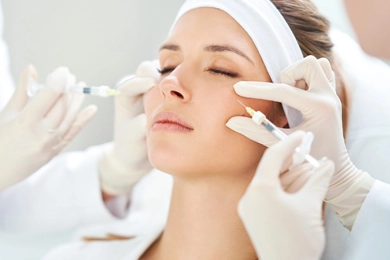 Unlocking the Secrets of Botox: A Comprehensive Guide
Unlocking the Secrets of Botox: A Comprehensive GuideA mainstay in the aesthetic treatment sector, Botox is a word that conjures up images of youth and beauty. Given its potent anti-aging properties and capacity to smooth wrinkles, it is understandable why mil Read More...
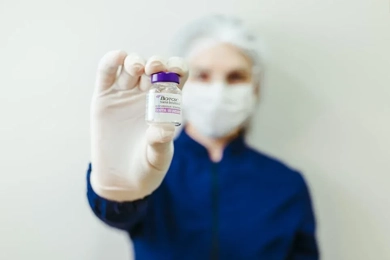 Botox: The Magic Medicine for Everything
Botox: The Magic Medicine for EverythingBotox, or Botulinum toxin as it is known scientifically, has long been associated with aesthetic surgeries meant to minimize wrinkles and fine lines. Read More...
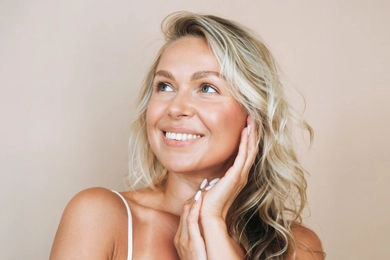 12 Unexpected Botox Benefits You Won't Believe
12 Unexpected Botox Benefits You Won't BelieveBotox, a word frequently associated with the realm of cosmetic beauty, conceals a slew of unexpected benefits beneath its surface that go beyond its conventional use. Read More...
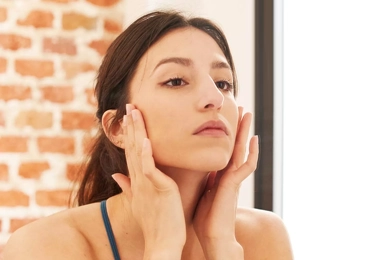 Botox Didn't Work; What Is the Reason for This? What Should I Do?
Botox Didn't Work; What Is the Reason for This? What Should I Do?Botox adverse effects may be attributed to a multitude of factors, including the practitioner's skill, the product's quality, or the physical attributes of the recipient. Read More...
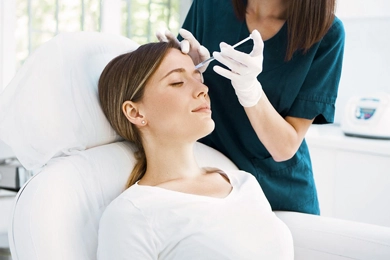 A Beginner's Guide to Botox: What to Expect and How to Prepare
A Beginner's Guide to Botox: What to Expect and How to PrepareThis comprehensive guide will outline the following: considerations to bear in mind, anticipations during and following a Botox treatment, and pre-treatment precautions. Read More...
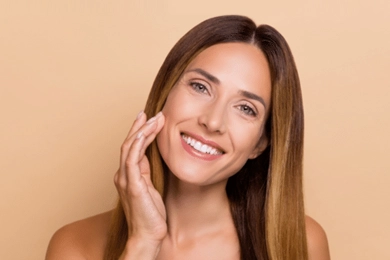 50 Things You Need to Know About Botox
50 Things You Need to Know About BotoxBotulinum toxin, which is created by the bacterium Clostridium botulinum, is the source of the drug known as Botox. Although it has a reputation for being able to minimize facial wrinkles, its roots are in m Read More...
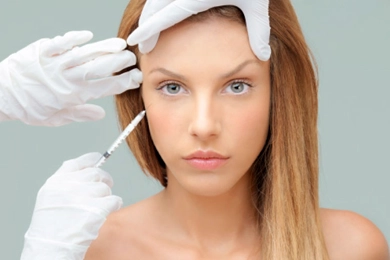 Does Resistance Develop to Botox?
Does Resistance Develop to Botox?Botox, a common non-surgical cosmetic procedure, has changed everything for many people who want to get rid of wrinkles and fine lines. Although the effects are frequently successful, some individuals report Read More...
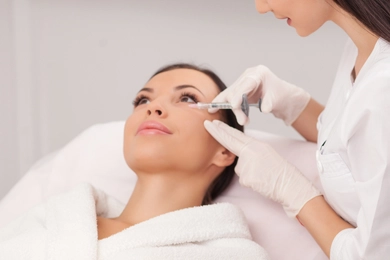 When Does the Effect of Botox Begin and How Long Does It Last?
When Does the Effect of Botox Begin and How Long Does It Last?Botox has grown to be one of the most popular cosmetic procedures in the globe due to its effectiveness in smoothing out wrinkles and fine lines. Potential patients frequently inquire about the beginning and Read More...
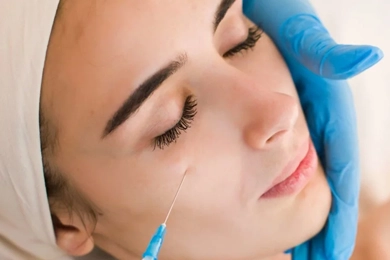 3 Zone Botox
3 Zone BotoxBotox continues to lead non-surgical aesthetic therapies in the large and ever-evolving field of cosmetic treatments. While the fundamentals of Botox are generally understood by most individuals, the idea of Read More...
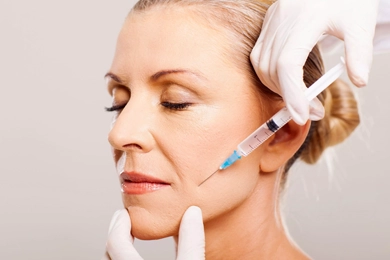 Post-Botox Care: The Do's and Don'ts for Optimal Results
Post-Botox Care: The Do's and Don'ts for Optimal ResultsWith millions of procedures conducted each year, Botox has solidified its position as a top non-surgical aesthetic treatment. Many people appreciate it due to its capacity to lessen wrinkles and give a more Read More...
 How Frequently Should I Get Botox?
How Frequently Should I Get Botox?Botox has become a buzzword in the aesthetic industry, renowned for its ability to smooth wrinkles and rejuvenate the complexion. However, a common conundrum that many encounter is determining the optimal fr Read More...
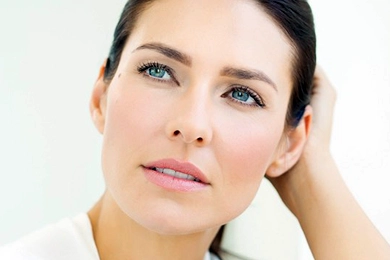 Botox vs. Filler
Botox vs. FillerBotox and dermal fillers stand out as two of the most popular and successful procedures in the cosmetic business for restoring a young appearance. Read More...
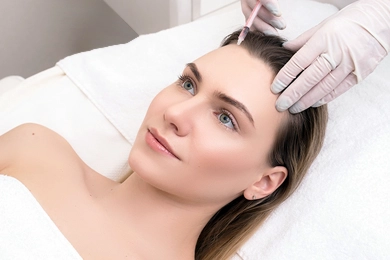 Preventative Botox
Preventative BotoxPreventative Botox stands out as a bright prospect for many in a time when the quest for perpetual youth has gained considerable traction. This cutting-edge technique is becoming more and more well-liked as Read More...
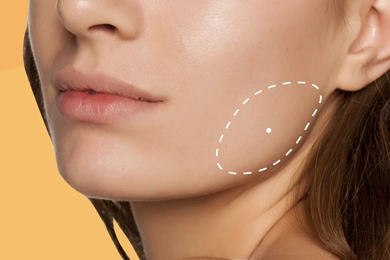 A Comprehensive Look at Botulinum Toxin
A Comprehensive Look at Botulinum ToxinBruxism is the medical term for teeth grinding or clenching, a common condition that many people experience at some point in their lives. Read More...
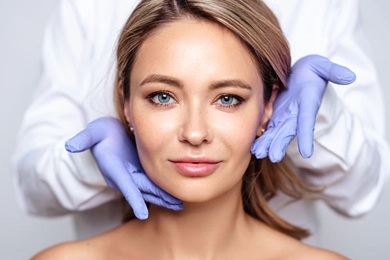 I Have Had Botox Done, But I Am Not Satisfied
I Have Had Botox Done, But I Am Not SatisfiedThe outcomes of Botox, however, can vary from person to person as with any medical procedure, and occasionally, patients may not be entirely satisfied with the results. Here is what you should do if you find Read More...
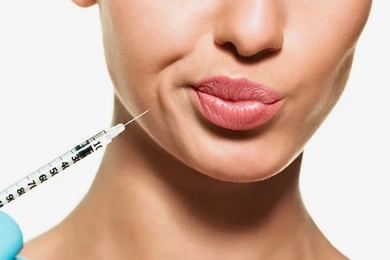 Can The Effects of Botox Be Undone?
Can The Effects of Botox Be Undone?The neurotoxin known as Botox, also known as botulinum toxin type A, has become extremely popular in cosmetic dermatology due to its capacity to minimize the appearance of fine lines and wrinkles. Read More...
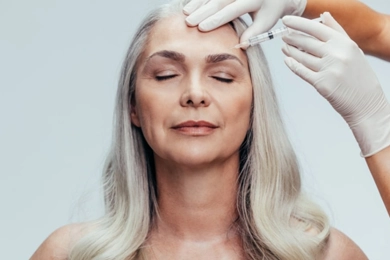 Can I Exercise After Botox?
Can I Exercise After Botox?In this article, we will examine the effects of exercise on Botox and offer some guidelines for exercising safely after receiving the popular cosmetic procedure. Read More...
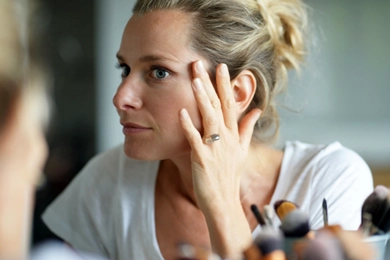 What Happens If I Stop Getting Botox Injections?
What Happens If I Stop Getting Botox Injections?For many years, people have used Botox, a common cosmetic procedure, to lessen the appearance of wrinkles and fine lines. It functions by obstructing the signals that travel from the nerves to the muscles, w Read More...
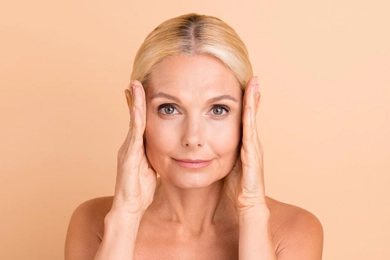 Botox Aftercare: Things you Should Avoid After Botox Treatment
Botox Aftercare: Things you Should Avoid After Botox TreatmentWhile Botox is a relatively safe procedure, it is important to follow proper aftercare instructions to ensure the best results. In this blog post, we will discuss things you should avoid after Botox treatmen Read More...
 How to Make Botox Last Longer
How to Make Botox Last LongerHow to Make Botox Last Longer It functions by preventing the signals that tell muscles to contract, which helps the skin become smoother. While Botox's effects are transient, there are strategies to extend i Read More...
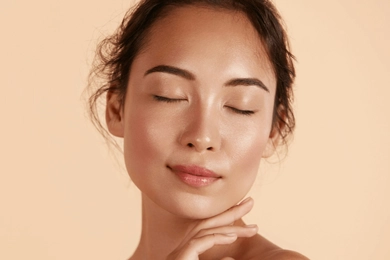 How Long Does Botox Last?
How Long Does Botox Last?A common cosmetic procedure that aims to lessen the appearance of wrinkles and fine lines is botox. It is frequently applied on frown lines, crow's feet, and forehead lines. But one concern that many people Read More...
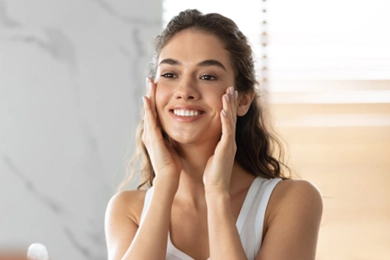 How Long Does Botox Take To Work, Timeline And More
How Long Does Botox Take To Work, Timeline And MoreBotox is a well-known cosmetic procedure that helps to hide facial wrinkles and fine lines. Yet when considering Botox, one of the most frequently asked queries is how long it takes to start working. We will Read More...
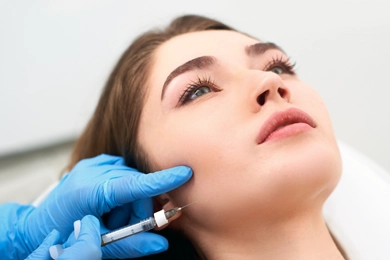 When Will You See Results After Masseter Botox?
When Will You See Results After Masseter Botox?There are several therapy options for bruxism, or the unintentional grinding or clenching of teeth. Injections of masseter Botox are one of the most well-liked and successful therapies. Read More...